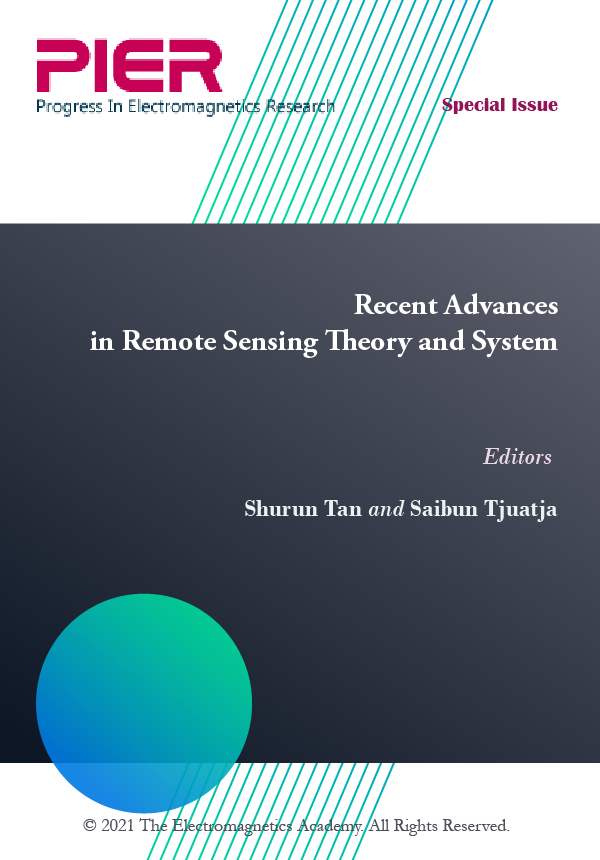光可调谐微波滤波器的光致电磁带隙结构
IF 9.3
1区 计算机科学
Q1 Physics and Astronomy
引用次数: 9
摘要
电磁带隙(EBG)结构为在广泛的应用中有效地操纵广泛频率范围内的电磁波提供了独特的解决方案。然而,迄今为止报道的大多数EBG设计要么需要复杂的制造工艺,要么具有有限的可调性和可重构性。在本文中,我们研究了使用一种新的光控制方法实现高性能可调和可重构EBG组件的潜力。该技术允许通过半导体中自由载流子的空间分辨光产生产生EBG结构,而无需任何复杂的制造工艺。通过仿真研究了一种基于光致单平面EBG结构的可重构微波频率可调带阻滤波器(BSF)。在这种方法中,使用数字光处理(DLP)投影仪将所需的EBG图案直接照射到安装在Duroid基板底部的Ge地平面上,以实现可调性。在HFSS仿真的基础上,可以通过修改EBG模式填充因子来调整BSF的带宽。通过调整EBG结构的周期,BSF的中心频率也可以在8-12 GHz之间进行调谐。此外,两个限制因素,即局部加热效应和有限的横向空间分辨率(由于载流子扩散),可能会影响电路的性能在该技术进行了研究和讨论。通过使用台阵结构地平面,这种方法有望开发可调谐和可重构电路,例如从微波到太赫兹的滤波器。本文章由计算机程序翻译,如有差异,请以英文原文为准。
PHOTO-INDUCED ELECTROMAGNETIC BAND GAP STRUCTURES FOR OPTICALLY TUNABLE MICROWAVE FILTERS
Electromagnetic band gap (EBG) structures offer unique solutions for effectively manipulating electromagnetic waves over a broad range of frequencies for a wide range of applications. However, most EBG designs reported so far either require sophisticated fabrication processes or have limited tunability and reconfigurability. In this paper, we investigate the potential to implement high performance tunable and reconfigurable EBG components using a novel optical control approach. This technology allows the generation of EBG structures through spatially-resolved photogeneration of free carriers in a semiconductor, without any complex fabrication processes. As a prototype demonstration, a reconfigurable microwave frequency tunable band-stop filter (BSF) based on photo-induced uniplanar EBG structures has been investigated through simulation. In this approach, the required EBG patterns are directly illuminated onto a Ge ground plane mounted to the bottom of a Duroid substrate for tunability using a digital light processing (DLP) projector. On the basis of HFSS simulations, the bandwidth of the BSF can be tuned by modifying the EBG pattern filling factor. The center frequency of the BSF could also be tuned from 8–12 GHz by adjusting the period of the EBG structure. In addition, two limiting factors, i.e., localized heating effects and finite lateral spatial resolution (due to carrier diffusion), that may affect the circuit performance in this technology have been investigated and discussed. By using a mesa-array structured ground plane, this approach is promising for developing tunable and reconfigurable circuits such as filters from the microwave to terahertz regimes.
求助全文
通过发布文献求助,成功后即可免费获取论文全文。
去求助
来源期刊
CiteScore
7.20
自引率
3.00%
发文量
0
审稿时长
1.3 months
期刊介绍:
Progress In Electromagnetics Research (PIER) publishes peer-reviewed original and comprehensive articles on all aspects of electromagnetic theory and applications. This is an open access, on-line journal PIER (E-ISSN 1559-8985). It has been first published as a monograph series on Electromagnetic Waves (ISSN 1070-4698) in 1989. It is freely available to all readers via the Internet.

 求助内容:
求助内容: 应助结果提醒方式:
应助结果提醒方式:


